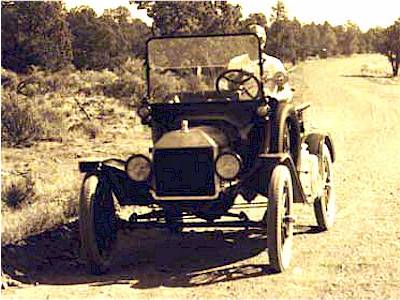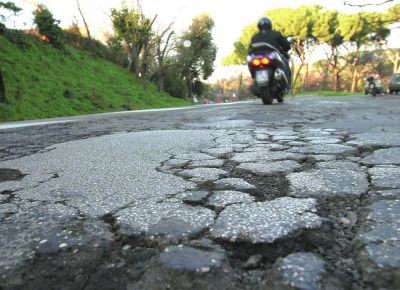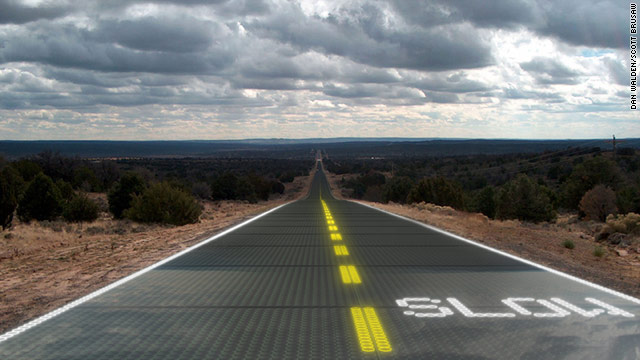Futures Forum: The future of public services: "Design-led thinking and a user-centred approach are integral to transforming our public services into successful, sustainable services."
And looking after roads is especially expensive:
Futures Forum: Volunteers in the community: 'doing jobs for free' or 'empowering communities to take local action'?
Perhaps we need to look beyond asphalt...
There are unspoken issues associated with using tarmac for road-building:
Firstly, there is the context of reducing reliance on fossil fuels:
Tarmac, and other such substances used for paving,are, as the Mundi Club point out,little more than coagulated oil slicks. These substances are products of levels of the catalytic cracker process in the same way that oil is. They underwrite oil production — make it an economically viable enterprise when otherwise it would not be; for while “The oil industry is mainly interested in gasoline production and profits ... refineries must run at high utilisation of capacity to be efficient and profitable. Refineries must produce great quantities of asphalt and various chemicals which must go somewhere ... thus asphalt and herbicides are spread about the land making it possible for refineries to function...near full throttle.”
The advocates of a ‘fossil free energy strategy’ unfortunately do not accept an accompanying end to paving, one of the logical consequences of that strategy. The production of tarmac, etc, and the production of oil are interdependent parts of refinery operations, and of the petrochemical economy — without one, you cannot have the other. So how will they square this circle — do their proposals actually require a continuation of that petrochemical economy that we’ve come to know and love?
Stopping The Industrial Hydra: Revolution Against The Megamachine
And in fact, the approach of 'Peak Oil' might make the use of asphalt/tar/bitumen prohibitively expensive anyway:
Futures Forum: Peak oil, peak soil, peak water... peak everything
Here is a piece from the Oil Drum website:
Peak asphalt: the return of gravel roads
Posted by Ugo Bardi on April 5, 2010 - 11:10am in The Oil Drum: Europe
Topic: Environment/Sustainability
Tags: bitumen, paved roads, peak oil
Topic: Environment/Sustainability
Tags: bitumen, paved roads, peak oil

Peak oil is said to be an inversion of tendency of the economy; but also of many things of everyday life that seem to have started to go back to earlier times. The last inversion of tendency comes from a series of articles in the press that describe the return of gravel roads. For the time being, that seems to be happening mainly in rural areas of the US, as described, for instance in USA-today. In Europe, there are fewer reports on this point, although it seems that the same situation is developing in northern countries. In places such as Finland, the cold climate places a higher stress on paved roads and forces the return to gravel roads. But the lack of press reports doesn't mean that the problem is not there: if you travel to Italy this year, you'll see that a lot of paved roads are in a pitiful state: full of potholes.
One problem is the increasing costs of maintenance. A report of the University of Minnesota shows the progressive increase in the costs of maintaining roads which are paved with what is called "hot mix asphalt", HMA, the kind of paving which we came to consider as normal for all public roads. Asphalt comes from crude oil. It is made from bitumen which is a heavy and viscous form of petroleum; normally the residual of the distillation of crude oil. Could it be that with peak oil we don't just have a problem of availability of fuels and of energy, but also of bitumen for paving roads?
That doesn't seem to be the case. If it is bitumen that we need, there is plenty of it. Just the Canadian tar sands are made mostly of bitumen and are said to contain at least one trillion barrels of it - probably more. To this amount, we can add Venezuela's tar sands, with at least half a trillion barrels. With tar sands, the main problem is to obtain liquid fuels, but if it is bitumen that we want, it is much easier. At present, bitumen doesn't seem to be lacking in the world market and some projections for asphalt indicate that production may be rising in the coming years.
The problem, as usual, is not one of quantity, but one of energy . With minerals, we are not running out of anything except of the energy needed for extraction. It is the principle that I called the universal mining machine. Bitumen doesn't seem to be an exception; we are not running out of bitumen, but we have increasing problems in being able to afford it; just as with a lot of other minerals. For this reason, the proposal of substituting conventional bitumen with products not coming from crude oil doesn't appear to be very practical. There has been talk of "bioasphalt;" made from a bitumen that could come from such products as sugar, molasses, corn and vegetable oil. But bioasphalt has the same problem of biofuels: there are limits to what we can get from an agriculture already heavily strained to produce enough food and which depends heavily on fossil fuels. We can pave a few roads with molasses, but we can't expect bioasphalt to substitute oil derived asphalt everywhere. Another alternative material for paving roads is concrete, the kind used for buildings. Concrete doesn't directly depend on fossil fuels - the problem is that it takes a lot of energy to make it. So concrete turns out to be more expensive than conventional asphalt. It may last longer, but don't expect it to become as commonplace as asphalt is today.
In the end, the problem seems to be that peak oil - arriving or already arrived - is placing a tremendous strain on the world's economy. Because of this strain, the kind of money used for maintaining roads is quickly disappearing and the result is the return of unpaved roads. It may be planned or not; the end result, in any case, is the same. So, it is likely that in the coming years we'll see more and more roads returning to gravel, as it was commonplace in the Western World up to about 50 years ago. When most roads were not paved, cars and trucks had much softer suspension systems and lighter wheels; we may see a comeback of this kind of vehicles which, by their nature, are not made for high speeds. After all, gravel roads don't mean the end of transportation. We'll just have to slow down considerably, and that may not be a bad thing.
Below: image from allaguida . Some modern streets in Italy, such as this one in Rome, are starting to look like archaeological remnants of the Roman Empire.

One problem is the increasing costs of maintenance. A report of the University of Minnesota shows the progressive increase in the costs of maintaining roads which are paved with what is called "hot mix asphalt", HMA, the kind of paving which we came to consider as normal for all public roads. Asphalt comes from crude oil. It is made from bitumen which is a heavy and viscous form of petroleum; normally the residual of the distillation of crude oil. Could it be that with peak oil we don't just have a problem of availability of fuels and of energy, but also of bitumen for paving roads?
That doesn't seem to be the case. If it is bitumen that we need, there is plenty of it. Just the Canadian tar sands are made mostly of bitumen and are said to contain at least one trillion barrels of it - probably more. To this amount, we can add Venezuela's tar sands, with at least half a trillion barrels. With tar sands, the main problem is to obtain liquid fuels, but if it is bitumen that we want, it is much easier. At present, bitumen doesn't seem to be lacking in the world market and some projections for asphalt indicate that production may be rising in the coming years.
The problem, as usual, is not one of quantity, but one of energy . With minerals, we are not running out of anything except of the energy needed for extraction. It is the principle that I called the universal mining machine. Bitumen doesn't seem to be an exception; we are not running out of bitumen, but we have increasing problems in being able to afford it; just as with a lot of other minerals. For this reason, the proposal of substituting conventional bitumen with products not coming from crude oil doesn't appear to be very practical. There has been talk of "bioasphalt;" made from a bitumen that could come from such products as sugar, molasses, corn and vegetable oil. But bioasphalt has the same problem of biofuels: there are limits to what we can get from an agriculture already heavily strained to produce enough food and which depends heavily on fossil fuels. We can pave a few roads with molasses, but we can't expect bioasphalt to substitute oil derived asphalt everywhere. Another alternative material for paving roads is concrete, the kind used for buildings. Concrete doesn't directly depend on fossil fuels - the problem is that it takes a lot of energy to make it. So concrete turns out to be more expensive than conventional asphalt. It may last longer, but don't expect it to become as commonplace as asphalt is today.
In the end, the problem seems to be that peak oil - arriving or already arrived - is placing a tremendous strain on the world's economy. Because of this strain, the kind of money used for maintaining roads is quickly disappearing and the result is the return of unpaved roads. It may be planned or not; the end result, in any case, is the same. So, it is likely that in the coming years we'll see more and more roads returning to gravel, as it was commonplace in the Western World up to about 50 years ago. When most roads were not paved, cars and trucks had much softer suspension systems and lighter wheels; we may see a comeback of this kind of vehicles which, by their nature, are not made for high speeds. After all, gravel roads don't mean the end of transportation. We'll just have to slow down considerably, and that may not be a bad thing.
Below: image from allaguida . Some modern streets in Italy, such as this one in Rome, are starting to look like archaeological remnants of the Roman Empire.

The Oil Drum: Europe | Peak asphalt: the return of gravel roads
One alternative might be concrete:
Why are they Replacing All the Concrete Roads with Asphalt? Ask an Engineer!
Another might be glass:
Solar-powered 'smart' roads could zap snow, ice
An artist's conception of engineer Scott Bursaw's proposed solar roadway, which would resist ice and snow.
STORY HIGHLIGHTS
- Engineers are developing high-tech road surfaces to melt snow, ice
- Federally backed Idaho engineer pitches solar-powered road made of super-glass
- Solar surfaces could power much of the nation, cut pollution, says inventor
- Expert: Smart roads could be tried in downtown areas of snow-prone cities
(CNN) -- The mayors of New York and Atlanta, Georgia, suffered stinging criticism for their handling of recent winter storms, but in the near future, technology could clear city streets of ice and snow -- by simply melting it away.
America's harsh winters cost the nation's economy billions of dollars each year in snow removal equipment, weather damage to streets and vehicles, extra days of school and revenue lost to closed businesses.
Scott Brusaw, a 53-year-old electrical engineer in tiny Sagle, Idaho, thinks he has a solution. So far, he's generated interest from the federal government and General Electric in his idea for a solar-powered roadway made from super-strong glass, instead of conventional asphalt or concrete.
Solar-powered 'smart' roads could zap snow, ice - CNN.com
Pave this: replace asphalt on roads with solar panels, power the nation
By Joe McKendrick
Aug 6, 2010
Solar-panel-paved roads and interstates could provide three times as much electricity now produced. But is it a workable idea on such a large scale?
Here's an idea that could provide the United States with all the solar power it needs, while also helping to fix a large part of our crumbling infrastructure: pave our 25,000 square miles of roadways with intelligent solar panels. A road "that pays for itself," its designers propose.
Is this a feasible idea, or something akin to trying to build a bridge across the Atlantic?
There may be some economic justification. Liquid asphalt, a petroleum-based derivative, now costs close to $1,000 a ton, while asphalt itself is still under $100 a ton, says Scott Brusaw of Solar Roadways, an engineer proposing the idea. "We can't keep building asphalt roads, doing the same thing... its an antiquated system we've been doing too long," he says. "Let's move on and leave the fossil fuels behind us."
Solar panels, operating at just 15 percent efficiency, installed as roadway surfaces within the 25,000 square miles of existing roads in the lower 48 states, would be capable of producing "three times as much electricity that we produce on an annual basis -- almost enough to power the entire world," Brusaw says.
Solar Roadways: The Prototype - YouTube
The prototypes for Solar Roadways were funded by a research award from the US Department of Transportation, which solicited ideas for an "intelligent pavement" that could generate power and pay for itself. Brusaw and his team built a 12' by 12' solar road panel prototype, along with a 3' by 3' LED-lit "crosswalk" panel. The smaller panel could be used to mark and illuminate the edges of roads and other hazards, Brusaw says.
"Roads are collecting heat anyway," Brusaw says, adding that "the technology behind it has already been done today."
Can a sheet of glass withstand pounding by two-ton cars, trucks, and buses? This is possible, Brusaw says, as "glass can have as high of strength as steel." There are other issues to be addressed, he adds, noting that driving on glass "has got to have the same traction as asphalt," as well as be shatterproof and glareproof.
However, the idea has its critics. When the DOT award was made for the idea, for example, a commentaryat The Infrastructurist site poo-pooed the idea as impracticable:
"Solar Roadways is engineering PV panels to withstand 40-ton vehicles going 80 miles an hour over them day and night for decades. How much more does it cost to make solar panels–already a bit pricey–totally indestructible? We’re guessing a lot. And this all so we can avoid putting them someplace sensible, like on all those empty rooftops in America’s sunnier climes, where cars and trucks don’t drive and where there also happens to be an existing electrical grid for them to hook into."
It may be too expensive and impracticable to lay out 25,000 square miles of solar panels. But perhaps some hybrid or partial approaches can be put in place. Or are we better off using more -- as The Infrastructurist suggests -- "sensible" locales for solar panels?
Pave this: replace asphalt on roads with solar panels, power the nation - SmartPlanet
Of course, there is the argument that we rely too much on our road system:
Futures Forum: The End of Suburbia: ten years on
Futures Forum: Lewis Mumford: "The physical design of cities and their economic functions are secondary to their relationship to the natural environment."
For something which really does challenge assumptions, see:
Whose Streets? Anarchism, Technology and the Petromodern State | Uri Gordon - Academia.edu
.
.
.


No comments:
Post a Comment